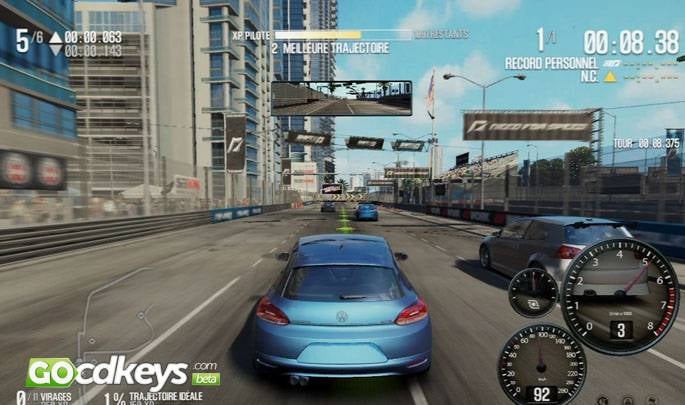
There are visual customization options like rims, vinyls and paints. There are body kits which affect the aerodynamics and weight reduction. Nitrous is also an option for tuning, but different from previous Need for Speed titles as it is simulated more realistically. The car customization options include cosmetics as well as performance mods and is more in depth than previous titles, affecting aspects such as alignment, aerodynamics, tires, brakes, differential, and gears. Tier 1 refers to entry-level sports and luxury cars like the Audi TT and Infiniti G35, tier 2 refers to mid-level performance cars like the BMW M3, tier 3 refers to supercars like the Lamborghini Gallardo and tier 4 refers to hypercars like the Bugatti Veyron, or Pagani Zonda R. There are 60+ cars which are divided into 4 tiers. The sound aspect have detailed car crash sound, as well as a sharp gasp of breath from the driver before a collision.

While crashing, there is a temporary blur on screen. The in-car view is highly detailed, and it is possible to see the driver changing gears and moving his head to get a better view of the mirror. The in-car view also returns, making its first appearance in a Need for Speed game since Porsche Unleashed.

G-force plays an important role in the game, as it affects both the player and the AI. Once completed, the player is welcomed to the 'NFS Live World Series', and must earn stars in races to earn money, and unlock new races and tiers. Upon starting the career mode, the player performs two laps around the Brands Hatch racecourse to determine his or her skill. Although the gameplay of these two titles are similar, Shift recreates car handling much more realistically than its predecessor, and does not contain a story. Aimed at a hardcore gamer-style audience, Shift reverts to the touring-car simulation style of its 2007 predecessor, Need for Speed: ProStreet.


 0 kommentar(er)
0 kommentar(er)
